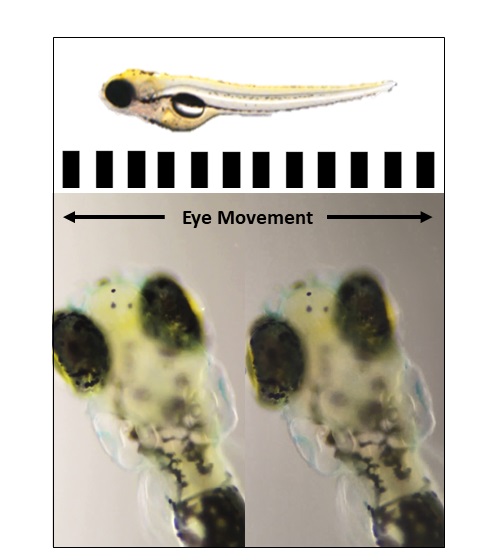New insights into Vitamin A recycling and daytime vision
Many of us will remember been told as kids when we refused to eat our vegetables that ‘carrots are good for your eyes’. Although our parents may not have fully understood it at the time, there is some truth to this. Carrots are a rich source of the vitamin A essential for healthy vision.
Researchers in UCD Conway Institute, in collaboration with international researchers at the University of Ulster, University of Washington and University of California, Los Angeles, have published new findings describing how our eyes recycle vitamin A so that we can see throughout the day.
To see the outside world, the type of vitamin A that we eat in our diet switches from an inactive (light-insensitive) to an active (light-sensitive) form in our eyes. This switch needs to be tightly controlled as too little of the active type or too much of the inactive type of Vitamin A can lead to inherited or age-related forms of blindness.
The retina is the light-sensitive layer in the back of the eye responsible for collecting light and delivering it to the brain so we can see our surrounding environment. It contains specialised cells necessary for receiving light called rod and cone photoreceptors.
Rods are important for vision in dim light whereas cones function in bright light conditions. As we are active during daylight hours and under artificial lighting at night, most human visual experiences are reliant on these cone cells. Colour vision is due to red, green and blue cone subtypes.
The study investigated vitamin A recycling and daylight vision by cone photoreceptors, using a drug called Emixustat. Emixustat is currently in phase 3 clinical trial for Stargardt disease, a juvenile form of inherited vision loss.
The UCD team, led by Professor Breandán Kennedy, UCD School of Biomolecular & Biomedical Science and Fellow, UCD Conway Institute worked on a small tropical fish, called zebrafish (Danio rerio), as their eyes are very similar to humans. Emixustat was used to block the activity of a protein called RPE65. Within the retina, this protein has an important job in switching inactive dietary vitamin A to active light sensitive vitamin A.

Caption: Assessing vision in zebrafish. If the 5 day old larvae see the black and white stripes rotating they move their eyes to track the movement.
“Our study found that zebrafish administered with the drug, Emixustat had poorer vision immediately after being removed from night-time darkness. They also had less light-sensitive vitamin A. This means that when we are in darkness, RPE65 protein is important to make the light-sensitive vitamin A so our eyes can see when moving to a well-lit environment”, explained Rebecca Ward, a Ph.D. researcher funded by an Irish Research Council Enterprise Scholarship with the charity, Fighting Blindness.
“Our study found that zebrafish administered with the drug, Emixustat had poorer vision immediately after being removed from night-time darkness. They also had less light-sensitive vitamin A. This means that when we are in darkness, RPE65 protein is important to make the light-sensitive vitamin A so our eyes can see when moving to a well-lit environment”, explained Rebecca Ward, a Ph.D. researcher funded by an Irish Research Council Enterprise Scholarship with the charity, Fighting Blindness.
Changes in the gene that makes RPE65 protein are linked to rapidly progressing forms of inherited childhood blindness. In these conditions, the death of rod and/or cone cells can occur due to inadequate levels of light-sensitive vitamin A. The researchers were also able to show that a chemically synthesised form of vitamin A (9-cis-retinaldehye) could restore vision in the zebrafish by bypassing the blockade of RPE65.
Commenting on the findings, Professor Breandán Kennedy said; “A puzzle for vision researchers is to understand how cone photoreceptors continuously recharge with light-sensitive vitamin A during daylight conditions. Surprisingly, we discovered that if the zebrafish with impaired vision due to Emixustat treatment, were exposed to light for 30 minutes or longer, they regained full vision.
“This indicates that RPE65 is required at night to provide light-sensitive vitamin A for vision in the morning. But, during the day, RPE65 is not required, and the eye uses light to regenerate the light-sensitive vitamin A – a clever, efficient solution”.
Dr Laura Brady, Head of Research at Fighting Blindness said, “We are delighted that this excellent and collaborative research, which incorporates the perspectives of those living with sight loss, has been recognised at an international level. This is a motivating example of how the priorities and lived experience of those affected by visual impairment can complement the scientific expertise and demonstrates the essential integration of all perspectives to yield more relevant and impactful research. By knowing how vision works, it becomes much easier for us to fix, and in our case to develop treatments that will prevent or restore vision.”
A Public and Patient Involvement (PPI) panel working with the UCD researchers throughout welcomed the research findings as an important step in understanding the processes involved in inherited vision loss.
“We acknowledge the value of using zebrafish to study eye diseases. We hope that one day, in the not too distant future, as a result of this important research, we will all be able to see these beautiful tropical fish.”
The research is published online in The Journal of Biological Chemistry.
Social Media Links